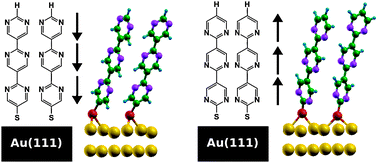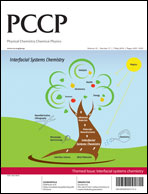Self-assembled monolayers of polar molecules on Au(111) surfaces: distributing the dipoles†
Abstract
Quantum-mechanical calculations are performed to investigate the interface between

- This article is part of the themed collection: Interfacial Systems Chemistry: Out of the Vacuum, Through the Liquid, Into the cell

 Please wait while we load your content...
Please wait while we load your content...